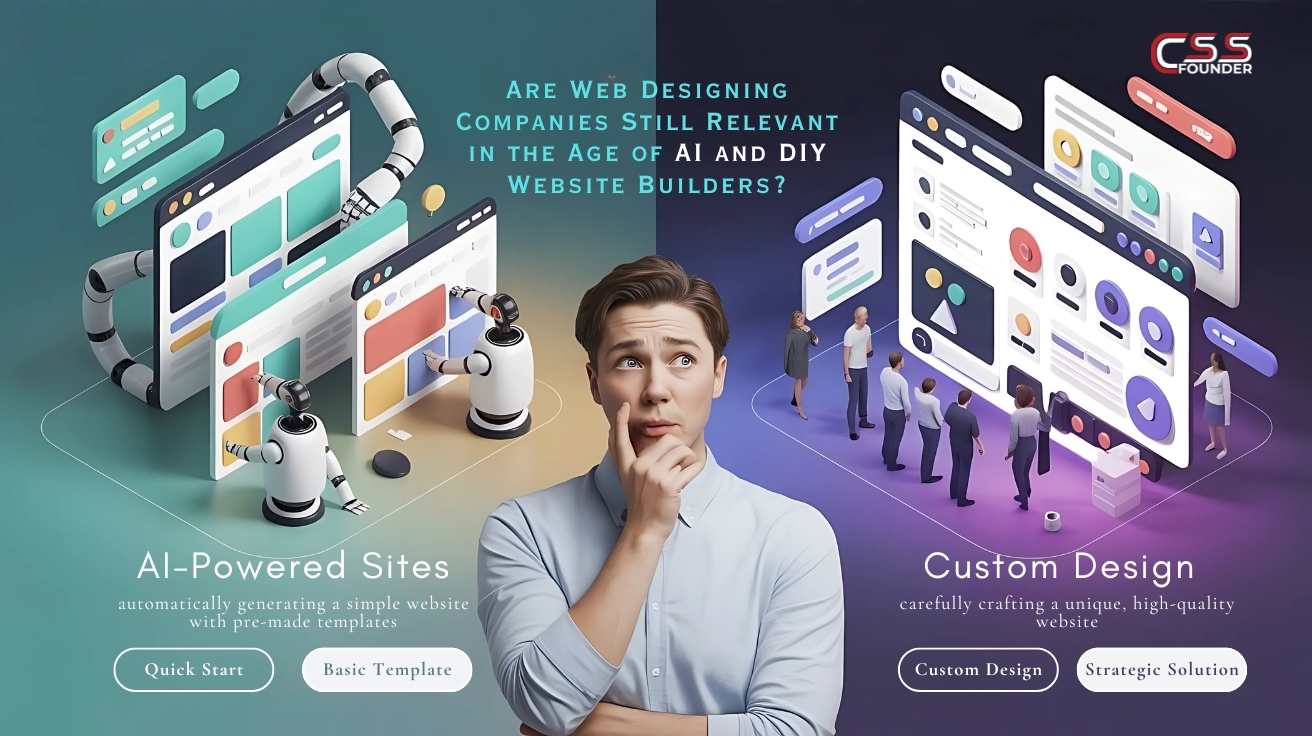In today’s digital age, websites have become an integral part of our lives. Whether it’s shopping, gathering information, or connecting with others, we rely on websites to meet our various needs. But have you ever wondered how these virtual spaces come into existence? Welcome to the fascinating world of website development! In this blog, we will embark on a journey to unravel the essence of website development, exploring its significance, the key elements involved, and the process behind crafting remarkable online experiences.
Understanding Website Development
Website development encompasses a broad range of activities involved in creating, designing, building, and maintaining a website. It is the art and science of giving life to an idea, enabling individuals and businesses to establish their digital presence. From simple personal blogs to complex e-commerce platforms, website development forms the foundation upon which the virtual realm thrives.
Key Elements of Website

- Web Design: Web design focuses on the visual aspects of a website, encompassing layout, color schemes, typography, and overall user experience. It aims to create an engaging interface that captures the attention of visitors and guides them seamlessly through the site’s content.
- Front-End Development: Front-end development deals with the client-side of websites, primarily focusing on user interaction and visual elements. It involves using languages like HTML, CSS, and JavaScript to build the structure, style, and functionality of web pages, ensuring they are responsive, intuitive, and aesthetically pleasing.
- Back-End Development: Back-end development pertains to the server-side of websites, where the behind-the-scenes magic happens. It involves building the database, server, and application logic that power the website. Languages like Python, PHP, Ruby, and frameworks such as Django and Ruby on Rails are commonly used in this domain.
- Content Management System (CMS): A CMS is a software tool that facilitates the creation, modification, and management of website content. It allows users to update content without extensive technical knowledge, enabling efficient content publishing and maintenance.

In our increasingly digital world, having a strong online presence is crucial for individuals and businesses alike. And at the heart of every successful online venture lies web development. Web development is an indispensable component of online success in today’s digital landscape. From establishing a global presence and enhancing your brand identity to fostering customer engagement and driving conversions, web development empowers businesses and individuals to leverage the power of the internet effectively. By investing in professional web development services and staying abreast of the latest trends and technologies, you can unlock the true potential of your online ventures and stay ahead in the dynamic and ever-evolving world of the web.
- Global Reach and Accessibility:
One of the primary reasons web development is essential is its ability to connect you with a global audience. Unlike traditional brick-and-mortar businesses limited by geographical constraints, a website allows you to reach people from all corners of the world. With the right web development strategies, your products, services, or message can be accessible to anyone with an internet connection, enabling you to tap into a vast customer base and expand your reach exponentially.
- Enhanced Branding and Credibility:
In today’s highly competitive digital landscape, a strong online presence is synonymous with credibility and professionalism. Your website is a powerful branding tool that allows you to showcase your unique identity, values, and offerings. A well-designed website with a cohesive visual identity and engaging content not only captivates visitors but also builds trust and establishes your credibility in the eyes of potential customers. Web development plays a crucial role in creating an impactful online brand image that differentiates you from your competitors.
- Improved Customer Engagement and User Experience:
Web development is all about creating an exceptional user experience for your website visitors. By incorporating intuitive navigation, responsive design, and interactive elements, you can enhance customer engagement and ensure visitors have a seamless browsing experience across various devices. A user-friendly website that loads quickly and is easy to navigate keeps visitors engaged, encourages them to explore further, and increases the chances of conversions or desired actions.
- Effective Marketing and Lead Generation:
Web development is not just about aesthetics and functionality; it also serves as a powerful marketing tool. With the right strategies in place, your website can become a hub for lead generation and customer acquisition. By implementing effective call-to-action buttons, lead capture forms, and integrating analytics tools, you can gain valuable insights into your visitors’ behavior and optimize your marketing efforts accordingly. Web development techniques, such as search engine optimization (SEO), ensure that your website ranks well in search engine results, driving organic traffic and increasing your visibility to potential customers.
- Flexibility and Scalability:
Another significant advantage of web development is the flexibility and scalability it offers. A well-built website can adapt and evolve along with your business needs. Whether you want to add new features, expand your product offerings, or update your content, web development allows for seamless integration of new functionalities without compromising the website’s overall performance. This scalability ensures that your website remains relevant and effective as your business grows and evolves.
- Streamlined Customer Support and Communication:
Web development provides opportunities for effective customer support and communication. By incorporating live chat features, contact forms, and interactive elements, you can engage with your customers in real-time, address their queries promptly, and provide personalized assistance. This level of interactivity and responsiveness fosters strong customer relationships, boosts customer satisfaction, and ultimately contributes to your business’s success.
What is a website?

In the vast realm of the internet, websites are the building blocks that shape our online experiences. From browsing news articles to shopping for products and connecting with friends, websites have become an integral part of our daily lives. But have you ever wondered what exactly a website is and how it functions? Let us unravel the mystery behind websites, exploring their definition, structure, and purpose.
Defining a Website:
Simply put, a website is a collection of interconnected web pages hosted on the internet. It is a virtual space where individuals, businesses, organizations, and institutions can share information, provide services, and engage with their target audience. A website is accessible to anyone with an internet connection, allowing users to navigate through its pages using hyperlinks, menus, and search functions.
Structure of a Website
- Web Pages: These are the building blocks of a website, containing text, images, videos, and other forms of content. Each web page has a unique URL (Uniform Resource Locator) that serves as its address on the internet.
- Navigation: Websites use menus, navigation bars, and links to help users move between different pages and sections. Clear and intuitive navigation enhances the user experience and makes it easier to find desired information.
- Content: Websites present various types of content, including textual information, images, videos, audio files, and interactive elements. Content is organized in a structured manner, allowing visitors to access and consume information efficiently.
- Design and Layout: Website design encompasses visual aspects such as colors, typography, graphics, and overall layout. A well-designed website is aesthetically pleasing, captures the brand’s identity, and provides a user-friendly experience.
- Functionality: Websites can have interactive features and functionalities, such as contact forms, search bars, e-commerce platforms, and user registration systems. These elements enable users to interact with the website and perform specific actions.
The Purpose of a Website
In today’s digital era, websites have become the virtual storefronts and information hubs that shape our online experiences. From providing information to facilitating transactions and fostering connections, websites serve diverse purposes. Understanding the structure and purpose of a website allows us to appreciate their role in the digital landscape and harness their power for personal and professional endeavors.
- Information Sharing: Websites are an invaluable tool for sharing information. They serve as platforms for publishing news articles, blog posts, educational content, and research findings. Websites allow businesses to display their products and services, helping potential customers make informed decisions.
- Communication and Engagement: Websites enable communication between website owners and their audience. Through contact forms, comments sections, live chat, and social media integrations, visitors can interact, provide feedback, and seek assistance.
- E-commerce: Many websites act as online marketplaces, facilitating the buying and selling of products and services. E-commerce websites provide secure payment gateways, shopping carts, and product catalogs, enabling users to make purchases conveniently from anywhere in the world.
- Branding and Promotion: Websites play a crucial role in building brand identity and promoting products, services, or personal portfolios. They provide a platform to showcase expertise, achievements, and unique value propositions, helping establish credibility and attracting potential clients or customers.
- Community Building: Websites can foster communities by hosting forums, discussion boards, or social networking features. These platforms bring like-minded individuals together, encouraging collaboration, knowledge sharing, and building strong relationships.

An IP address, short for Internet Protocol address, is a unique numerical label assigned to each device connected to a computer network. It serves as an identifier that allows devices to communicate and exchange data with each other over the internet.
An IP address consists of a series of numbers separated by periods. The two primary versions of IP addresses in use today are IPv4 (Internet Protocol version 4) and IPv6 (Internet Protocol version 6).
IPv4 addresses are written in the format of four sets of numbers, each ranging from 0 to 255, such as 192.168.0.1. However, due to the limited number of available IPv4 addresses, the world has transitioned to IPv6, which uses a longer address format. IPv6 addresses are written in a hexadecimal format, containing eight groups of four hexadecimal digits, separated by colons, for example, 2001:0db8:85a3:0000:0000:8a2e:0370:7334.
IP addresses are essential for establishing connections and routing data across the internet. They help identify the source and destination of data packets, ensuring they reach the intended devices. When you connect to the internet, your device is assigned an IP address by your internet service provider (ISP). This IP address can be either dynamic (changes each time you connect) or static (remains the same).
IP addresses play a crucial role in various internet-related activities, including website hosting, email delivery, online gaming, and remote access. They enable devices to locate and communicate with each other using standardized protocols and ensure data packets are delivered accurately to their intended destinations.
An IP address is a unique numerical label assigned to devices connected to a computer network. It allows devices to communicate and exchange data over the internet, facilitating the seamless flow of information across the digital landscape.
What does HTTP mean?
HTTP stands for Hypertext Transfer Protocol. It is the primary protocol used for transmitting data over the internet. HTTP enables communication between web browsers (clients) and web servers, allowing the exchange of hypertext, which consists of text, images, links, and other multimedia elements.
When you enter a website’s URL in a web browser, the browser sends an HTTP request to the server hosting the website. The server then responds with an HTTP response, which contains the requested web page or the relevant data.
HTTP operates on a client-server model, where the client initiates the request, and the server processes and responds to it. The protocol specifies a set of rules and conventions for how data is structured, transmitted, and interpreted by the client and server.
HTTP is a stateless protocol, meaning that each request and response are independent of previous interactions. This characteristic allows for scalability and simplicity but also requires additional mechanisms (such as cookies and session management) to maintain continuity and handle user sessions.
Over time, HTTP has evolved, and newer versions, such as HTTP/1.1 and HTTP/2, have been introduced to enhance performance, security, and efficiency. These versions introduced features like persistent connections, content compression, and multiplexing to optimize the transfer of data between clients and servers.
HTTP is the protocol that facilitates communication between web browsers and web servers, enabling the retrieval and display of web pages and other web resources. It serves as the foundation for browsing the World Wide Web, powering our interactions with websites and the transfer of information across the internet.
What does front-end mean?
Front-end, also known as the client-side, refers to the part of a website or application that users interact with directly. It encompasses the user interface (UI) and user experience (UX) components of a digital product.
Front-end development involves creating and implementing the visual and interactive elements that users see and interact with on their devices, such as web browsers or mobile apps. Front-end developers use programming languages like HTML (Hypertext Markup Language), CSS (Cascading Style Sheets), and JavaScript to build the front-end components of a website or application.
- HTML: HTML provides the structure and markup for web pages. It defines the elements and layout of the content, such as headings, paragraphs, images, links, forms, and more.
- CSS: CSS is responsible for the presentation and styling of the web pages. It controls the appearance of HTML elements, including colors, fonts, spacing, layout, and responsiveness across different devices.
- JavaScript: JavaScript is a programming language that adds interactivity and dynamic functionality to web pages. It allows developers to create interactive features like form validation, animations, sliders, modals, and more. JavaScript also enables communication with web servers and the manipulation of web page elements in real-time.
- Frameworks and Libraries: Front-end developers often use frameworks and libraries like React, Angular, or Vue.js to streamline the development process and enhance efficiency. These tools provide pre-built components, templates, and utilities to simplify front-end development tasks.
- Responsive Design: Front-end development involves implementing responsive design techniques to ensure that web pages and applications adapt and display correctly across different devices and screen sizes. This ensures a consistent and user-friendly experience for users on desktops, tablets, and mobile devices.
- Accessibility: Front-end developers consider accessibility best practices to ensure that websites and applications are usable and accessible to individuals with disabilities. This includes providing alternative text for images, proper semantic markup, keyboard navigation support, and more.
Front-end development is an iterative process that involves collaboration with designers, back-end developers, and other stakeholders. It requires a balance between aesthetics, functionality, and performance to create engaging and user-friendly interfaces. The goal of front-end development is to provide a seamless and visually appealing experience for users, making it an essential aspect of creating successful digital products.
What does back-end mean?
Back-end, also known as the server-side, refers to the behind-the-scenes components of a website or application that handle the processing, storage, and retrieval of data. It encompasses the server, database, and application logic that work together to deliver the requested content or functionality to the front-end.
Back-end development focuses on building and maintaining the server-side infrastructure that supports the functioning of a website or application. Back-end developers primarily work with programming languages like Python, Java, Ruby, PHP, or Node.js, as well as frameworks and tools specific to server-side development.
- Server: The server is a powerful computer or a network of computers that host the application and respond to requests from clients (typically web browsers or mobile apps). It handles the processing of incoming requests, executes the necessary code, and sends back the corresponding responses.
- Database: The database is where data is stored, organized, and retrieved. Back-end developers interact with databases to design, create, and manage the data models and schemas. They use query languages like SQL (Structured Query Language) or NoSQL databases to perform data operations such as inserting, updating, deleting, and retrieving data.
- Application Logic: The back-end is responsible for implementing the business logic and rules that govern the application’s functionality. This includes processing user inputs, handling authentication and authorization, managing user sessions, performing calculations, and managing data flows between the server and the database.
- APIs (Application Programming Interfaces): Back-end developers often build APIs to allow communication and data exchange between the back-end and front-end components. APIs define the methods, endpoints, and data formats through which different software systems can interact and share information.
- Security: Back-end development involves implementing security measures to protect data and ensure the integrity of the application. This includes handling user authentication, encrypting sensitive information, implementing access control, and safeguarding against common security vulnerabilities.
- Performance and Scalability: Back-end developers optimize the performance and scalability of the application to handle increasing user loads and maintain responsiveness. This includes optimizing database queries, caching data, implementing load balancing, and scaling the infrastructure as needed.
Back-end development is essential for creating robust and functional websites and applications. It enables the seamless integration of front-end components with the underlying infrastructure, ensuring efficient data processing, secure transactions, and smooth user experiences. Back-end and front-end development work together to deliver complete and powerful digital solutions to users.
Types of Web Development

Web development has evolved into a multidimensional field with various specializations, each catering to specific aspects of building and maintaining websites and web applications. Whether you’re a business owner looking to create an online presence or an aspiring developer seeking to enter the industry, it’s essential to understand the different types of web development. In this blog, we will explore some of the key types of web development and their unique characteristics.
- Front-End Development:
Front-end development focuses on creating the user-facing components of a website or application. Front-end developers work with HTML, CSS, and JavaScript to build visually appealing and interactive interfaces. They ensure that the user experience is smooth, responsive, and engaging. Front-end development involves implementing designs, optimizing performance, and ensuring cross-browser compatibility. Frameworks and libraries like React, Angular, and Vue.js are often used to streamline the development process and enhance efficiency.
- Back-End Development:
Back-end development involves the server-side aspects of web development. Back-end developers build the infrastructure and logic that power websites and web applications. They work with programming languages like Python, Ruby, PHP, Java, or Node.js, along with frameworks and databases. Back-end development focuses on managing data, handling business logic, implementing security measures, and building APIs for communication between different components. It ensures that the back-end processes run smoothly and efficiently, supporting the functionality of the front-end.
- Full-Stack Development:
Full-stack development combines both front-end and back-end development skills. Full-stack developers have a broad understanding of the entire web development process, from designing interfaces to working with databases and handling server-side logic. They can handle both client-side and server-side tasks, making them versatile and capable of building end-to-end web solutions. Full-stack developers are proficient in multiple programming languages, frameworks, and databases, allowing them to work on all aspects of a web project.
- Mobile App Development:
Mobile app development focuses on creating applications specifically for mobile devices such as smartphones and tablets. Mobile app developers utilize programming languages like Swift for iOS or Java/Kotlin for Android to build native apps that run directly on mobile operating systems. They leverage platform-specific frameworks, SDKs (Software Development Kits), and mobile app design principles to create intuitive and optimized experiences for mobile users. Mobile app development often involves integrating device features like GPS, camera, or push notifications.
- E-commerce Development:
E-commerce development specializes in building online stores and e-commerce platforms. E-commerce developers work with frameworks like Magento, WooCommerce, or Shopify to create secure and scalable online shopping experiences. They handle product catalogs, payment gateways, shopping carts, order management, and inventory tracking. E-commerce development also includes optimizing performance, ensuring data security, and implementing features like personalized recommendations or customer reviews to enhance the shopping experience.
The Website Development Process
Website development is a multidisciplinary field that merges creativity, technical expertise, and user-centric design principles. It empowers businesses, organizations, and individuals to create a compelling online presence, engage with their target audience, and provide value in the digital landscape. By understanding the key elements and the development process, you can appreciate the meticulous craftsmanship behind the websites we encounter every day. So, whether you’re a developer, designer, or simply an internet user, take a moment to marvel at the artistry and dedication that goes into crafting these virtual wonders.
- Planning: This stage involves defining the website’s purpose, target audience, goals, and overall structure. It includes identifying key features, creating wireframes, and establishing a clear roadmap for the development process.
- Design: The design phase encompasses translating the planned structure into visual elements. Web designers work closely with clients to create mockups, select color palettes, typography, and design user interfaces that align with the website’s objectives and branding.
- Development: Here, the front-end and back-end developers come into play, bringing the design to life. They write code, integrate functionalities, develop databases, and ensure seamless performance across different devices and browsers.
- Content Creation: Concurrently with development, content creation takes place. It involves crafting compelling and relevant text, images, videos, and other media that align with the website’s purpose and engage visitors.
- Testing and Launch: Thorough testing is essential to ensure the website functions flawlessly. This involves checking for responsiveness, cross-browser compatibility, usability, and fixing any bugs or issues. Once everything is in order, the website is launched, making it accessible to the public.
- Maintenance and Updates: Websites require ongoing maintenance to ensure optimal performance and security. This involves regular updates, monitoring, and addressing any technical issues that arise. Additionally, new features and content can be added to keep the website fresh and relevant.
Web development encompasses a wide range of specializations, each contributing to the creation of dynamic and functional websites and applications. Front-end developers focus on creating user interfaces and experiences, while back-end developers build the server-side infrastructure and logic. Full-stack developers have a comprehensive understanding of both front-end and back-end development. Mobile app development caters specifically to creating applications for mobile devices, and e-commerce development specializes in building online stores. Understanding the different types of web development allows businesses and developers to choose the right approach for their specific needs, ensuring successful digital solutions in the ever-evolving online landscape.





.png)


